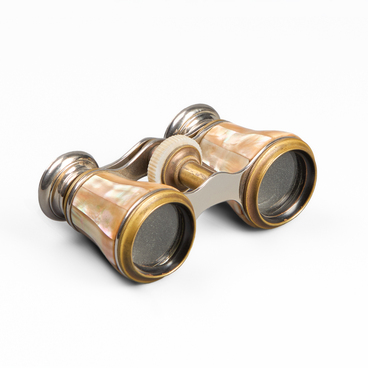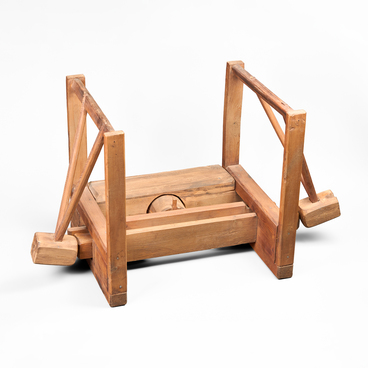The exhibition at the Belgorod State Historical and Local History Museum features a 19th-century table from the family of the descendants of the Russian actor, founder of realism in Russian stage art, and native of Belgorod, Mikhail Semenovich Shchepkin. This table was used both as a writing desk and as a dressing table.
For the first time, the combination of a writing desk and a dressing table appeared in the early 18th century. The distinctive feature of such tables was the combination of a mirror and a tabletop, which provided multifunctionality.
In this writing desk, a mirror in a rectangular frame was built into the tabletop made of Karelian birch, which could be raised and lowered. The wood of Karelian birch was known for its beautiful texture and was expensive, so only wealthy people could afford such furniture. The table is wonderfully adorned with carved decorative legs in the form of sphinxes, showcasing the creative approach of the craftsmen of that time.
In 2014, the table was restored at the All-Russian Art and Research Conservation Center named after Academician Igor Emmanuilovich Grabar.
The table was donated to the museum in 1971 by the actress of the Maly Theater Elena Nikolaevna Shchepkina, the great-granddaughter of Mikhail Semenovich.
Mikhail Semenovich Shchepkin was born in 1788 in the village of Krasnoye, Oboyansky district, Kursk province (now the village of Alekseevka, Yakovlevsky district, Belgorod region) in the family of a serf, who managed the estate of Count Gavrila Semenovich Wolkenstein.
In 1801, Shchepkin graduated from the Sudzha district school, and studied at the four-grade provincial school in Kursk. In 1805, he began performing in the plays of the Barsov brothers in Kursk. For almost 17 years, while remaining a serf, Shchepkin performed on the provincial stage, acting in Kursk, Kharkov, Poltava and other cities of southern Russia. It was only in 1821 that he and his family were freed from serfdom.
In 1823, Mikhail Semenovich was enrolled in the
state troupe of the Moscow Theater, and a year later — in the Maly Theater.
Shchepkin would dedicate his entire creative life to the Maly Theatre, which he
devoted 40 years to. Subsequently, the Maly Theater would come to be known as
the “House of Shchepkin.”


